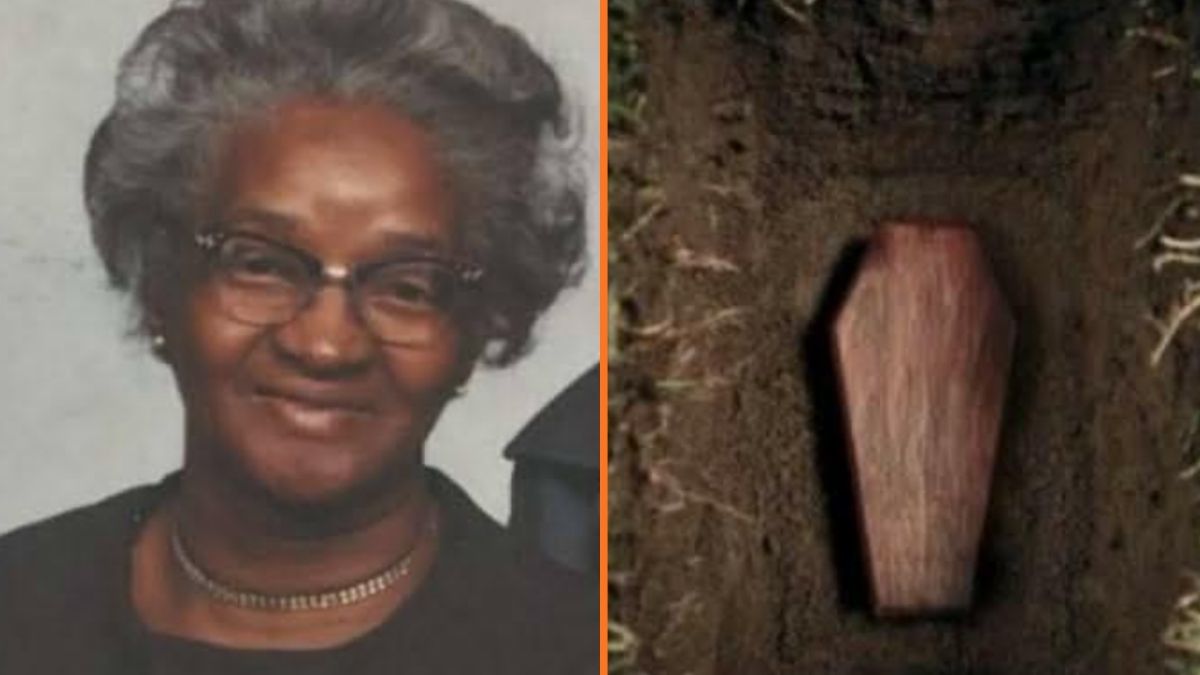In the summer of 1915, a 30-year-old woman named Essie Dunbar from South Carolina experienced an epileptic seizure and fell to the ground. Her family panicked and called a local doctor, Dr. D. K. Briggs from Blackville, to check on her. When the doctor arrived, he could find no signs that Essie was still alive. She was not breathing and had no pulse, leading him to inform the family that she had died.
The family decided to hold the funeral the next morning at 11 a.m. Essie’s sister lived in another town and needed time to arrive for the service. On the morning of the funeral, Essie’s body was placed in a wooden coffin. Three preachers took turns leading the service, which went on for quite a while. However, Essie’s sister still had not arrived.
Eventually, feeling they could wait no longer, the family proceeded with the burial. They lowered the coffin into a six-foot-deep grave and covered it with dirt. Just minutes later, Essie’s sister finally showed up. Upset that she had missed the funeral, she asked if she could see her sister one last time.
After some hesitation, the preachers agreed to dig up the coffin. What they found was shocking: Essie was sitting up inside, very much alive and even smiling at her sister and those gathered around. She was not a ghost or anything supernatural—just a woman who had been mistakenly buried alive.
The sudden resurrection caused immediate panic. The three preachers were so frightened they stumbled backwards into the grave. In the chaos, one preacher was stepped on by the others and suffered three broken ribs. Many people at the funeral fled, convinced Essie was a ghost returning from the dead.
Despite the terrifying scene, Essie was simply a regular woman who had been buried by mistake. Fortunately, she was rescued just in time. However, the townspeople of Blackville struggled to understand what had happened. For years afterward, Essie was treated differently. Some called her a zombie, while others believed she was cursed for somehow cheating death.
Amidst the rumors and superstition, Essie returned to her normal life and became a well-known figure in town. In 1955, the Augusta Chronicle published an article about her at age 70. The paper reported that she was still alive and working, picking cotton to earn money.
A local doctor, Dr. O. D. Hammond, who had treated one of the injured preachers, spoke to the newspaper. He said Essie “has many friends today” and “gets a nice-sized welfare check monthly and earns some money picking cotton.” The article also noted an interesting fact: Essie had outlived Dr. Briggs, the same doctor who had declared her dead decades earlier.
Essie Dunbar’s remarkable story echoes other chilling tales, such as that of a shaman who buried followers alive in shallow graves. Essie went on to live 47 more years after her first “death” and finally passed away on May 22, 1962, at a hospital in South Carolina at the age of 77.
Local newspapers covered her death with the headline, “Final Funeral Held For South Carolina Woman.” This time, Essie’s burial proceeded without incident.
However, modern historians and fact-checkers remain skeptical about the accuracy of the full story. The website Snopes notes there are no records from 1915 to verify the events. Most information comes from the 1955 newspaper article and the 2001 book *Buried Alive: The Terrifying History of Our Most Primal Fear.*
Whether entirely true or partially embellished, Essie Dunbar’s story remains a haunting reminder of the fears surrounding premature burial and the mysteries of life and death.
https://wegotthiscovered.com/fyi/woman-dies-and-gets-buried-but-her-late-arriving-sister-demands-to-see-her-for-the-next-47-years-the-town-lived-in-fear-of-the-zombie/


